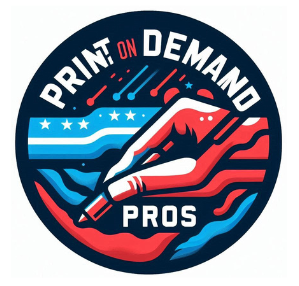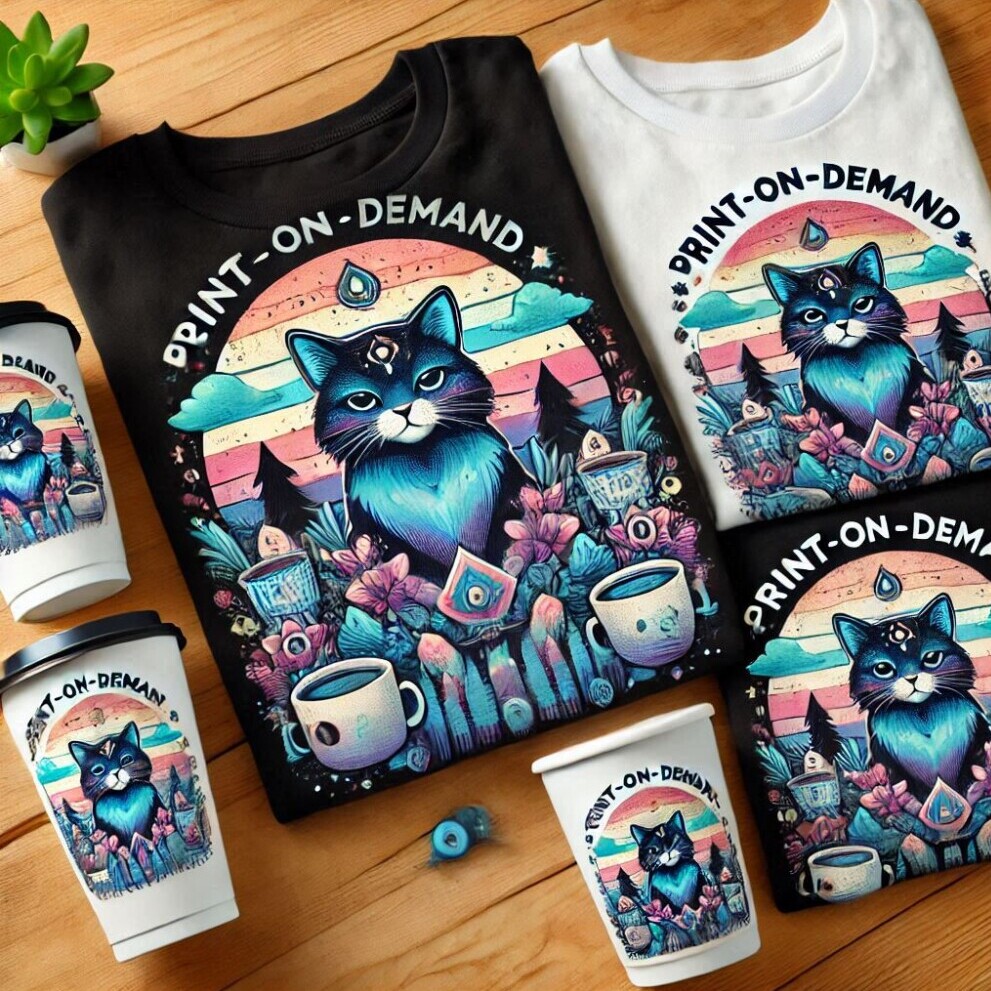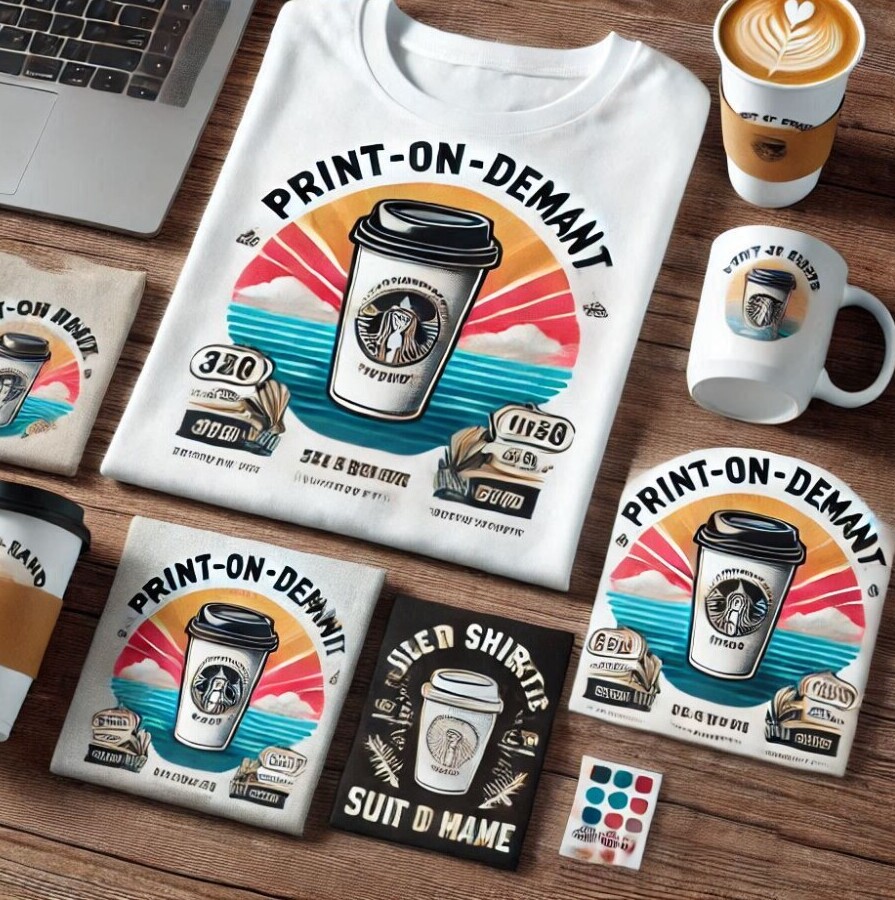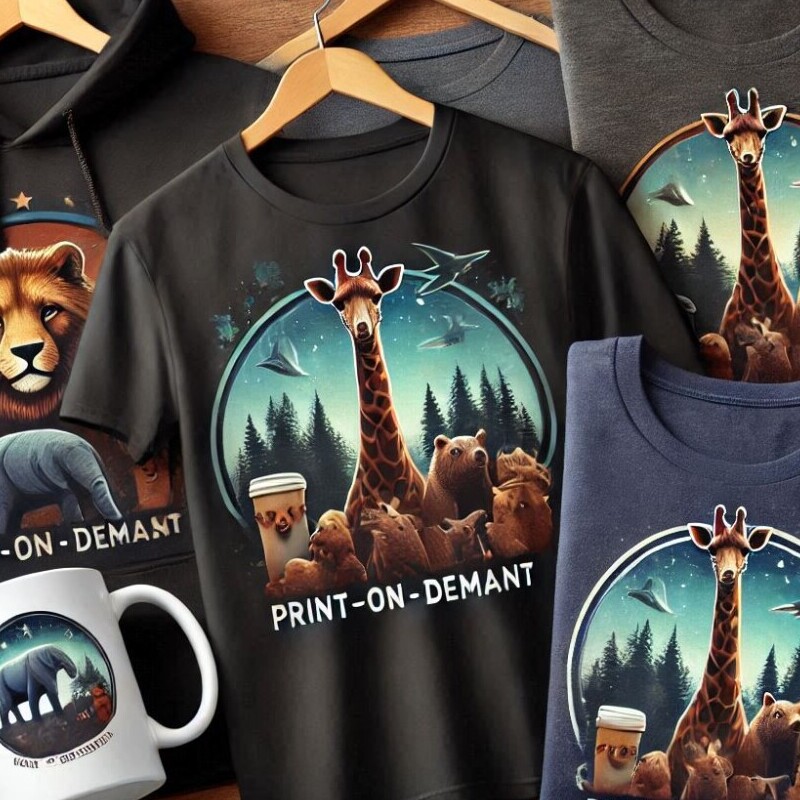In the fast-evolving world of business, printing has become more than just a choice between ink and paper. It’s now about choosing the right strategy that matches your business needs. With the web-to-print market booming and projected to grow by a whopping $528.71 million by 2025, businesses are faced with important decisions regarding their printing options.
Print-On-Demand, or POD, is an exciting trend reshaping how businesses approach production. Imagine being able to print items only when there’s an order, effectively wiping out the risk of excess inventory. This approach has given entrepreneurs and small businesses the chance to test new product ideas without the financial strain that comes with traditional bulk printing.
Traditional or large-run printing is a staple for companies with established products and predictable demand. It involves printing a large number of units in one go, often at a lower cost per piece. This method is a well-oiled machine suitable for businesses with more predictable patterns in demand.
Understanding these two main printing strategies—and when to use them—can be a game-changer for your business. It’s not just about cost. It’s about flexibility, speed, and the ability to adapt to market demands. The best choice often hinges on your specific needs and goals, whether you’re a startup looking to break ground or an established player scaling your operations.
Pros and Cons of Print-On-Demand
Print-On-Demand (POD) has unlocked a realm of possibilities for many businesses, especially those wanting to dip their toes without diving into deep financial waters. With POD, you’re not putting a hefty chunk of your money at risk since you only fork out cash once your products are sold. It’s like paying for a meal only after you’ve taken a satisfying bite.
The biggest perk of POD is the flexibility it offers. Got a new design idea? Fantastic! You can roll it out without worrying about what you’ll do with a garage full of unsold stock if it flops. Need to make a quick tweak to an existing product? No big deal—you can do that with POD. This can be a godsend for creatives and small business folks wanting to test the waters without the worry of what happens if sales don’t match up to expectations.
However, every rose has its thorn, right? POD often comes with higher per-item costs and shipping fees. That can nibble away at your profits if you’re not careful. It’s less suited for big volume orders due to these added expenses, so if you’re selling like hotcakes, POD might start feeling a bit restrictive financially.
Successful POD relies on weighing these pros and cons—finding the right trade-off between keeping your operations nimble and managing costs. If you’re just launching or trying out novel ideas, POD could be your ticket. But if you’re looking down the barrel of high-volume sales, you might need to consider what’s best for your margins.
Advantages and Disadvantages of Large-Run Printing
Large-run printing brings a different set of benefits to the table, especially if you’ve got a product that’s flying off the shelves. When you order in big batches, you’re looking at significantly lower costs per unit. Bulk printing can really trim down those expenses, making it a favorite for companies with consistent, strong demand.
With this method, once you get rolling, it’s smooth sailing. Production becomes more streamlined and efficient, and replenishing stock can be as easy as hitting repeat on your favorite playlist. You’re packing efficiency and cost-effectiveness in one neat package.
But the kicker with large-run printing is the lurking risk of overstocking. Nobody wants to find themselves buried under a mountain of extra merchandise if things don’t go as planned. There’s also the issue of storage fees—something that creeps up as a hidden cost if you’re not careful about your inventory management.
Then there’s the inflexibility factor. When you’ve got thousands of units already printed, making changes or updating designs can be a hurdle. It’s like trying to redirect a speeding train.
Choosing this route is best when your demand is as steady as a rock and when you’ve gotten a firm grasp of what your audience loves. It’s less about agility and more about riding that wave of established demand efficiently.
Short-Run Printing: Bridging the Gap
Short-run printing carves a niche perfectly suited for businesses that don’t fit snugly in either the POD or large-run box. Think of it as the middle ground—a sweet spot for those who need smaller quantities but want a bit more control over production details.
One of the standout benefits is customization. You can switch things up without the oversized commitment that a large run demands. It’s ideal for niche markets or tinkering with variations of your product without going fully POD.
Short-run printing also means you’re not weighed down by massive initial costs like large-run printing. This makes it easier to manage cash flow while remaining agile. Kind of like getting the best of both worlds if handled correctly.
That said, it’s not completely free of wrinkles. Turnaround times might stretch out longer than the blink-fast fulfillment POD offers. Plus, design options may not be as extensive as you’d hope, particularly if the setup costs per design are a bit higher.
Short-run is often the go-to for businesses needing a precise balance between quantity and quality, offering just enough flexibility to tweak and test without overextending resources. Perfect for when you’ve got a focused market in sight but still crave some creative play.
Choosing the Right Printing Method for Your Business
Deciding on the best printing option for your business boils down to a few key factors. Think about your inventory risk tolerance, the volume of orders, and how much wiggle room you have in your budget. Everyone’s situation is unique, and your choice should reflect what suits your particular needs best.
If your business thrives on innovation and needs to stay nimble—like testing new designs in real-time—Print-On-Demand offers the flexibility to adapt without blowing your budget on nonexistent stock. It keeps the pressure off, making room for creativity and spontaneity.
Have a firm handle on your market with products that already have a devoted following? Large-run printing might just be your perfect match. It’s all about efficiency and maximizing profit margins when demand is predictable and healthy.
And let’s not forget about our friend, short-run printing. It’s the chameleon of printing strategies, offering that golden middle ground. Ideal if you need to keep things fresh and customized without taking drastic leaps.
The key is, no matter your choice, to leverage each method’s strengths in a way that aligns with your business model and goals. Whatever route you take, a well-planned printing strategy can boost your brand’s impact and keep your customers coming back for more.




Thank you for this incredibly comprehensive breakdown of printing strategies!
What clicked for me was how you explained each method’s role in different business stages. The analogy of POD being like ‘paying for a meal only after you’ve taken a satisfying bite’ made the concept crystal clear. I especially appreciated how you highlighted the hidden costs in large-run printing, like storage fees, something that’s often overlooked in similar articles. Your analysis helped me understand that choosing between POD, large-run, and short-run printing isn’t just about cost calculations, it’s about aligning with your business’s growth stage and risk tolerance. The projected market growth figure ($528.71 million by 2025) also gave me valuable context about where the industry is heading. This article will be my go-to reference when making printing decisions for my business.
Thanks for making such complex business decisions more digestible!
Eric
Thank you so much. We try to bring you only the best information for your planning and research.
Some wonderful printing strategies to keep in mind. I think it is easier to profit with print on demand if you can print ten or more items the same. Doing one will cost more so I would definitely charge extra especially if you still have to design the product. The more of one design you do the better for your business so I would definitely offer incentives like better prices on bulk orders.